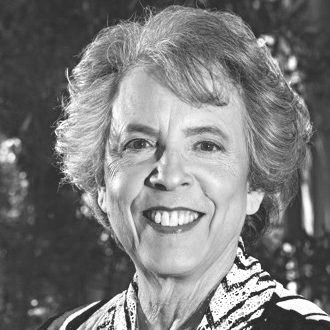Hebrew letters, when decoded, are magical. So it was especially powerful when my adult b’nai mitzvah Hebrew class was working on the letter Bet and opened the Torah to this week’s portion to find that it’s the first letter of Torah.
“Why not Alef?” one student asked.
The ancient rabbis asked the same question. Their answer? Look at how the Bet is shaped. What does this letter — which is open to the left and closed on the right — teach us?
It points us toward the future. Look forward, not backward. It doesn’t matter what came before; what matters is what happens now. This is an important spiritual teaching for those of us caught up in past dramas that keep us from going forward and beginning again.
Then my students tried to sound out the first three words of Torah: Bereshit bara Elohim. We read some different translations. One rendered the words: “In the beginning, God created …”; another: “When God began to create …”
One student immediately pointed out that those translations don’t mean the same thing. How you choose to translate these three words determines your view of creation — is this the beginning or not?
So we looked to Rashi, the famous medieval commentator. Commenting on the opening words, Rashi says: “These words call out: Interpret me!” In other words: All this is metaphor, not to be taken literally. It is not intended to teach the actual order and physical details of creation. The next sentence includes: “and the spirit of God hovered over the face of the waters.” If this teaches the order of creation, when were the waters created?
What Rashi knew in the 11th century is apparently lost on certain Americans who are demanding that creationism be taught alongside evolution. Is it possible to reconcile the biblical account with modern scientific knowledge? Maybe in very broad strokes. “Let there be light” might not be so different from the Big Bang theory.
But to argue this way is to miss the point. The Bible is not science, but religion.
And just to make the point even more clear, when creationists talk about the biblical story of creation, which one are they talking about?
There are actually two — the first chapter and the second. In the first, human beings are the pinnacle of creation, created on the sixth day in the image of God, male and female. In the second, the human was created first and then the animals. In the first, the human is both male and female. In the second, first there is the male human and then out of his rib comes woman. Or maybe not. Maybe the second story is a detail of the first. Some rabbis read the word tzela, which is usually translated as “rib,” to mean “side.” (It is the same word that is used to describe the side of the portable tabernacle in the wilderness.) So even in the second story, one could imagine the first Adam as male and female, androgynous. In this reading, when God creates man and woman, God splits the original human in two, fashioning one side as a man and one side as a woman.
Another interpretation of the two stories comes from Rabbi Joseph Soloveitchik. For him, two different images of human beings emerge from each story. In Genesis 1, humans are given power over the whole world. In Genesis 2, the focus is more personal, presenting a human being longing for community. Both stories together capture the truth. We are simultaneously powerful beings who need intimacy and community.
Perhaps the two stories are to remind us that we need humility to acknowledge that there are no answers to certain questions. There is mystery in creation. Beginning the Torah with the letter Bet hints at the mystery.
So the purpose of the creation stories in Genesis is not to tell us the physical details of how the world was created, but rather to help us understand why we are here. We are created in the image of God, says the first story. Our task is to create a world where everyone can live as though he or she really were created in God’s image — every human being unique, equal and of ultimate value. The second story tells us that we are to tend the garden God gave us. A midrash tells us that God took the original human being by the hand and showed the human all the trees of the garden. “See how beautiful and how perfect are all my works. All that I created, I created for you. So take care of my world. For there is no one else to look after it.”
Science and religion don’t contradict each other; they speak different languages. We need science to understand how the universe works and to improve the conditions of our lives. We need religion to remind us that creation isn’t finished; it is up to us to be God’s partners in creating a world that is good. We need them both — each for their appropriate purpose.
Laura Geller is senior rabbi of Temple Emanuel of Beverly Hills, a Reform congregation.





















 More news and opinions than at a Shabbat dinner, right in your inbox.
More news and opinions than at a Shabbat dinner, right in your inbox.